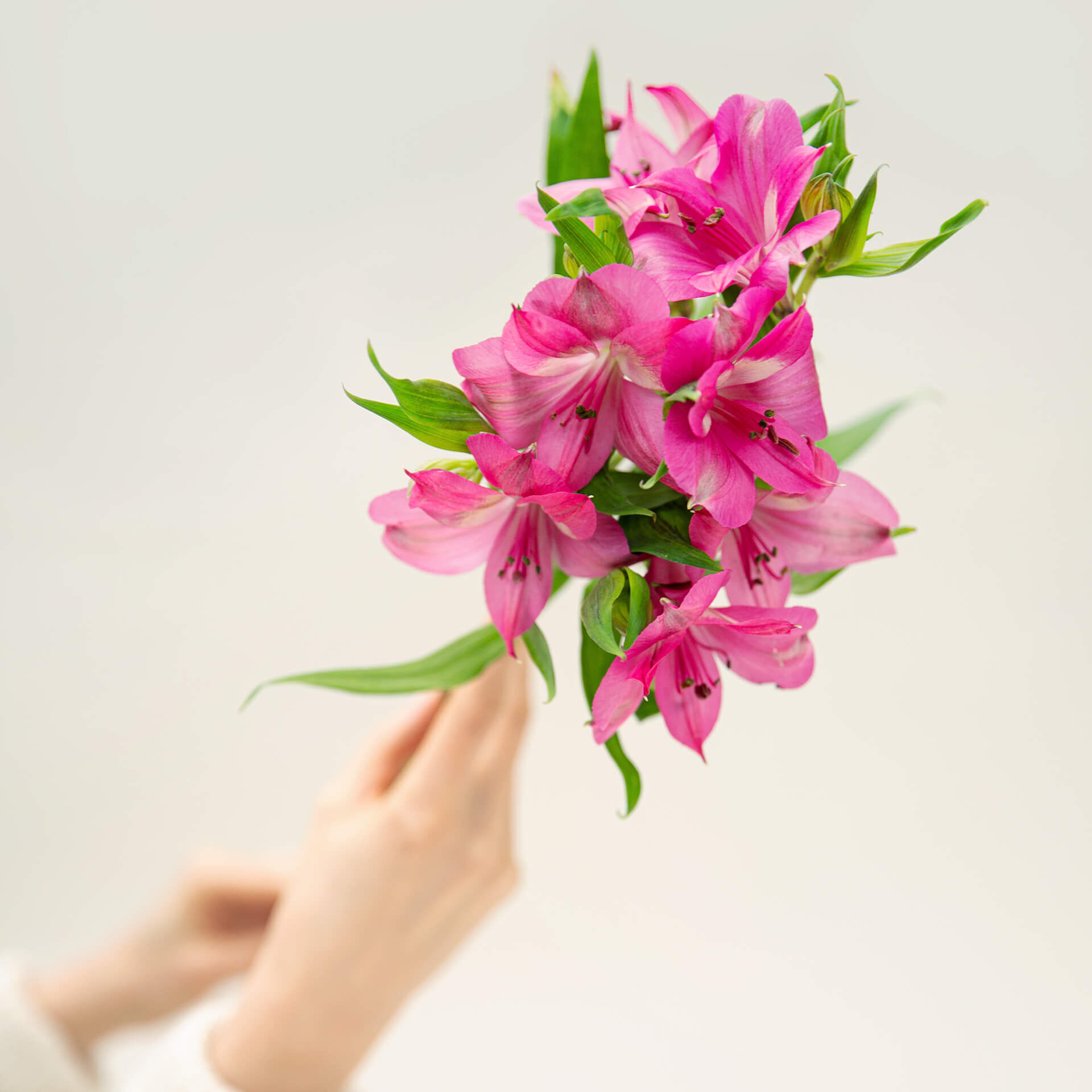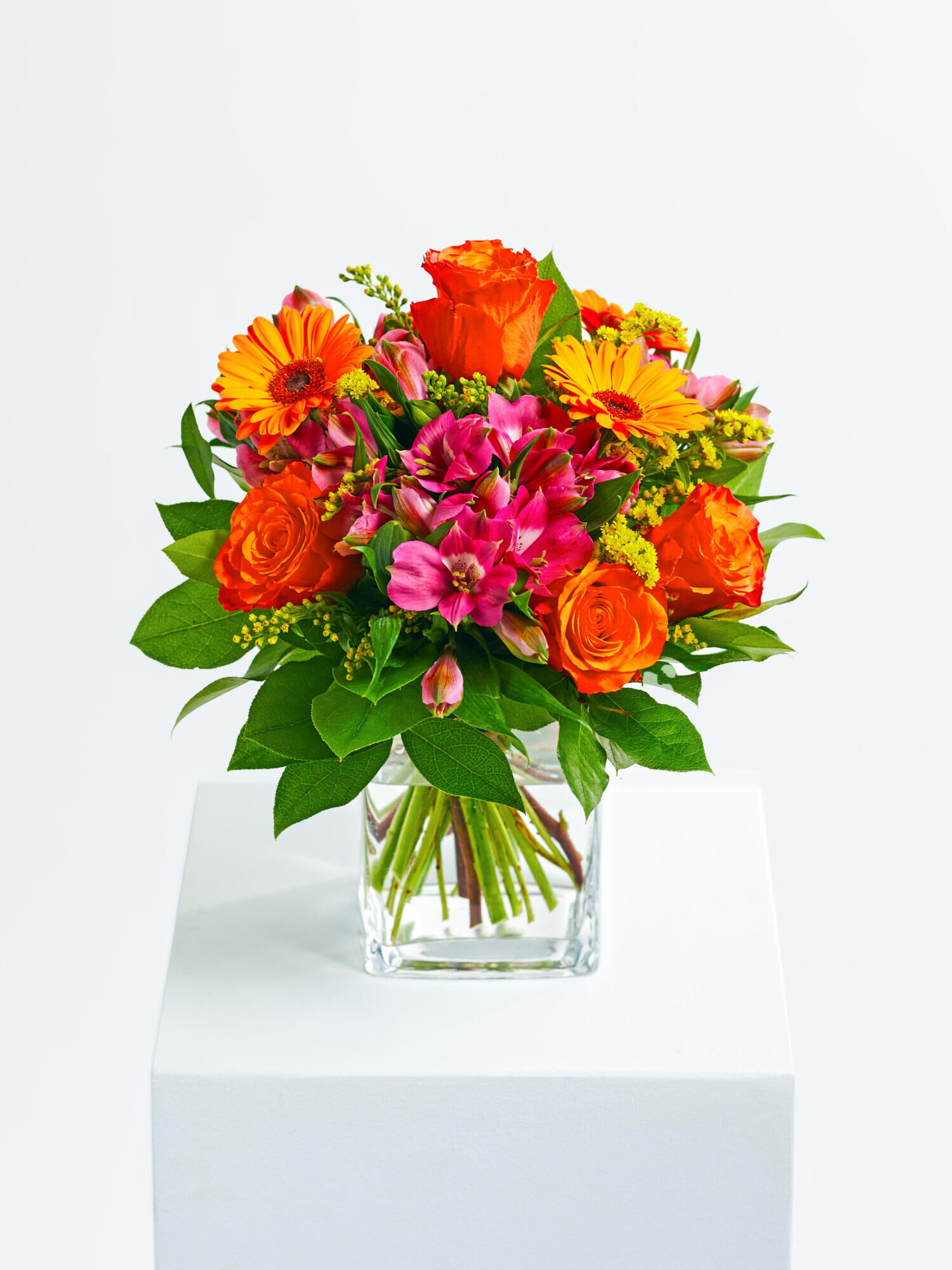Alstroemeria Care: Growing and Caring for Inkalily

Alstroemeria is one of the most popular cut flowers in the world. Their exceptional beauty and long shelf life make them a perfect choice for bouquets and floral arrangements. But what makes this flower so special? In this article, you'll find out everything you need to know about calla lilies and why no bouquet should be without them.
Origin and significance
The Inca lily originally comes from the Andes in South America, particularly Peru and Chile. This exotic flower was named after the Swedish botanist Claus von Alstroemer, who discovered it in the 18th century and brought it to Europe. In its native country, the incalilla is a symbol of friendship and devotion, which makes it a popular flower for gifts.
Properties of alkali lilies
The alkali lilies are characterised by their vibrant colours and unique flower shape. The petals are often decorated with contrasting spots and stripes, giving them a particularly exotic look. They are available in a variety of colours, including red, pink, yellow, orange and white. One of the special characteristics of the incas lily is its long shelf life as a cut flower. With the right care, they can stay fresh for up to two weeks.
Species diversity of alkali lilies
The genus Alstroemeria comprises around 50 to 60 species, which are characterised by their variety of colours and flower patterns. The best-known species include the Alstroemeria aurea, also known as the golden calla lily, which impresses with its bright yellow flowers, and the Alstroemeria psittacina, which catches the eye with its striking red-green flowers. Another popular species is the Alstroemeria ligtu, which flowers in a range of colours from pink to orange and purple-blue. Each of these species brings its own unique beauty and therefore offers a rich selection for flower lovers and florists. Hybridisation has also produced a large number of varieties that are characterised by their particular robustness and unusual colouring, making incalilias one of the most versatile flowers for gardens and flower arrangements.
Caring for and propagating alkali lilies in the garden
Caring for calla lilies in the garden
- Location: Choose a sunny to semi-shady location with well-drained soil. Inca lilies do not like heavy, waterlogged soil. A slightly acidic to neutral pH value is ideal.
- Planting: The best planting time for calla lilies is in spring, after the danger of frost has passed. Plant the tubers about 15 cm deep and 30 cm apart to provide sufficient space for growth.
- Watering: Keep the soil evenly moist, but not wet. Incal lilies need regular watering, especially during the growing season and in hot weather. However, waterlogging should be avoided to prevent root rot.
- Fertilisation: Fertilise the plants in spring with a slow-release organic fertiliser or compost. Additional fertilisation during the flowering period promotes abundant flowering.
- Protection in winter: Inca lilies are not completely hardy. In colder regions, it is advisable to cover the plants with a layer of mulch or leaves in autumn to protect them from frost. Alternatively, the tubers can be dug up and kept frost-free over winter.
Propagation of calla lilies
- Timing: The best time for division is in spring or autumn.
- Procedure: Carefully dig up the plant and separate the rhizomes (rootstocks) with a sharp knife or secateurs. Each part should have several shoots and roots.
- Replanting: Plant the divided rhizomes immediately in their new location and water them well. Make sure that the planting depth remains the same as before.
- Collecting seeds: Collect the seeds from ripe seed capsules in late summer or autumn.
- Sowing: Sow the seeds in spring in seedling pots or directly in the open ground. Press the seeds lightly into the soil and keep the substrate evenly moist.
- Germination: Germination can take several weeks to months. Patience is important here, as calla lilies grow more slowly from seed.
Care tips for calla lilies
There are a few care tips you should follow to ensure that your calla lilies stay fresh and beautiful for a long time:
- Fresh water: Change the water in the vase every two to three days.
- Cut at an angle: Regularly cut the stems at an angle to improve water absorption.
- Location: Place the vase in a cool place, away from direct sunlight and radiators.
- Flower food: Use flower food to prolong the life of the calla lilies.
Possible diseases and pests
Like all plants, alstroemeria can also be affected by various diseases and pests. The most common problems include aphids, which feed on the plant juices and thus weaken growth. Spider mites are another problem, especially in dry and warm environments, and lead to yellowish discolouration and leaf fall. Grey mould (Botrytis) is a fungal disease that mainly occurs in high humidity and is manifested by grey, mould-like coatings on flowers and leaves. Root rot can be caused by waterlogging and leads to the death of the plant. Preventative measures such as good air circulation, regular checks and, if necessary, the use of biological pesticides are essential to maintain the health of the alstroemeria. At the first sign of disease or pest infestation, affected parts of the plant should be removed and appropriate countermeasures taken to prevent them from spreading.
The most frequently asked questions about alstroemeria
With the right care, alstroemeria can stay fresh for up to two weeks.
Yes, alstroemeria is slightly poisonous and should be kept away from pets and small children.
They prefer a sunny to semi-shady location and well-drained soil. Regular watering and the removal of faded flowers promote healthy growth.
Spring is ideal for planting alstroemeria as it gives them enough time to establish themselves and grow vigorously.
Possible reasons are too little light, a lack of nutrients or unsuitable soil conditions. Good care and the right location are crucial for abundant flowering.














